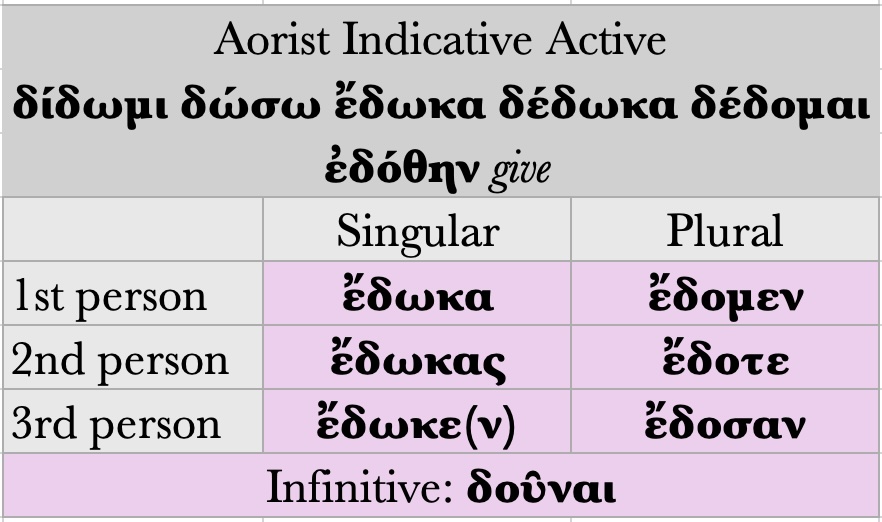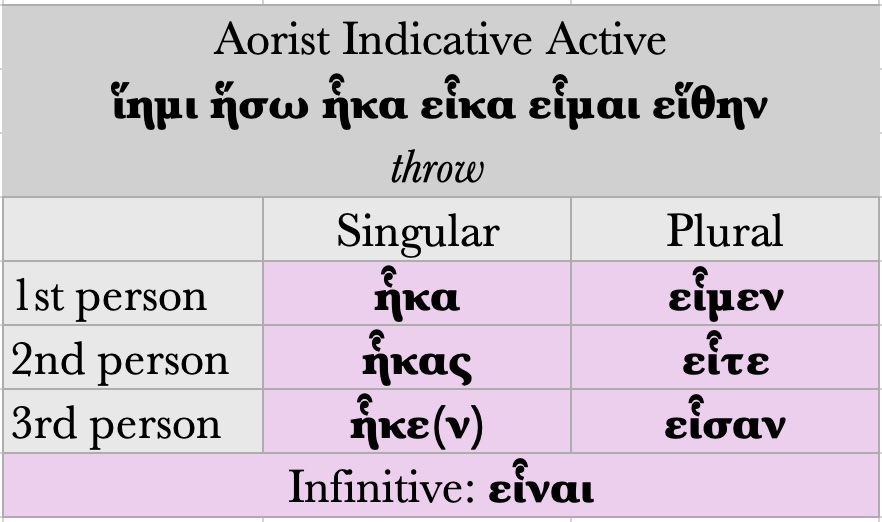29.1 Most –μι verbs have a FIRST AORIST. For example, the verb say is φημί, φήσω, ἔφησα. Some of the most common –μι verbs, however, are not formed in the first aorist. The verb εἰμί has no aorist at all!
29.2 Other –μι verbs have their own peculiarities. The verbs δίδωμι, τίθημι, and ἵημι, for example, share the following characteristics:
- They are FIRST AORISTS in the singular, with –κα replacing –σα.
- They are SECOND AORISTS in the plural and infinitive; the long stem vowel becomes short, as in the present and imperfect tense.
- They form their INFINITIVES by adding –εναι, which contracts with the short stem vowel (S 760, G 273). For example:
- δό-εναι → δοῦναι
- θέ-εναι → θεῖναι
- ἕ-εναι → εἷναι
The first three principal parts, as a result, now look like this:
- δίδωμι, δώσω, ἔδωκα (stem: δω/δο-)
- τίθημι, θήσω, ἔθηκα (stem: θη/θε-)
- ἵημι, ἥσω, ἧκα (stem: ἡ/ἑ-)
Knowing these first three principal parts allows us to understand the vast majority of verbal forms that we encounter in Greek. There are, however, a total of SIX PRINCIPLE PARTS possible for many verbs. The FOURTH and FIFTH PRINCIPLE PARTS are PERFECT TENSES, which are treated in later chapters. The SIXTH PRINCIPLE PART is discussed later in this chapter.
Notice that, in the singular, ἵημι uses ἡ-, as it does in the present tense, and also adds a –κα– marker. In the plural and infinitive, ἵημι uses εἱ– (for ἔ–ἑμεν, S 756, G 374).
In general, and particularly in the plural, the aorist forms of ἵημι are more commonly found with prefixes than as stand-alone verbs.






